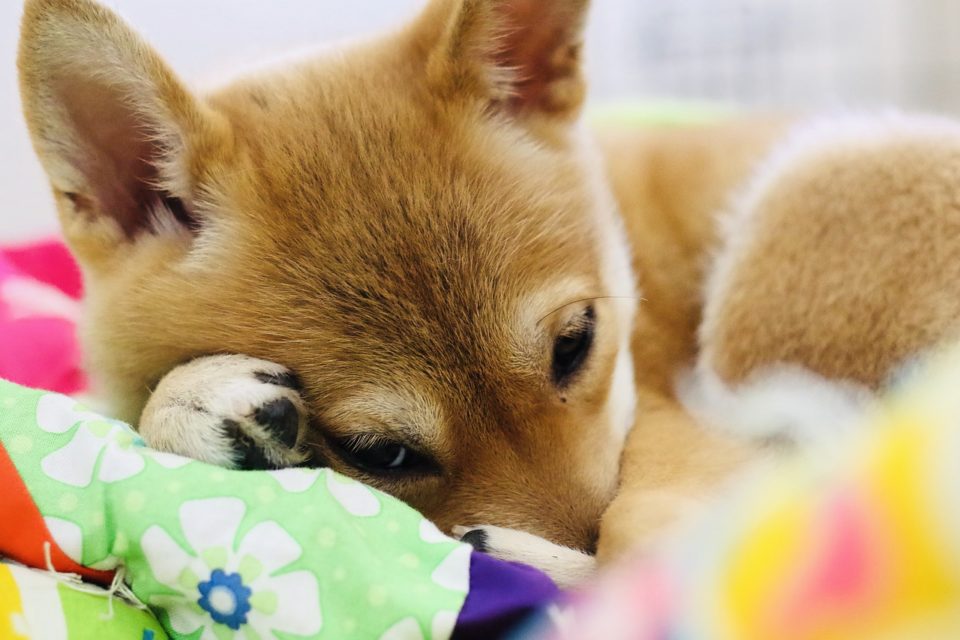Ever-popular in Japan, Shiba Inus and Akitas took the world by storm with appearances in popular memes, movies, and the incredible, true tales of love and loyalty.
My name is Michelle Ropp, and I first became enchanted by these dogs when I heard the true story of Hachikō.
An Akita dog, Hachikō waited for his owner at Shibuya Station every day as he returned home from work.
When his owner passed away at work, Hachikō continued to wait—every day for over nine years—for his owner at Shibuya Station, until he passed away, as well.
Touched by Hachikō’s love and loyalty to his late owner, a statue was raised in the dog’s honor and his story was shared as movies and books.
If you would like to read more about this story, click here!
Soon after, the internet was flooded by the “Doge” meme, a picture of a cute dog accompanied by silly text.
If you do not understand the “Doge” meme, watch the video below
Although Doge slightly resembled Hachikō, they were actually two entirely different breeds.
The internet sensation was a Shiba Inu—a smaller breed than Akitas like Hachikō—but no less full of character and ingenuity.
An Introduction to Shiba Inus and Akitas
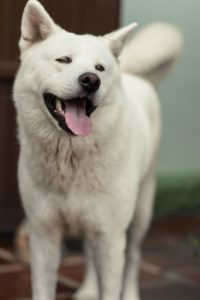 Although they share as many differences as they do similarities, Akitas and Shiba Inus are both spitz-type dog breeds native to Japan.
Although they share as many differences as they do similarities, Akitas and Shiba Inus are both spitz-type dog breeds native to Japan.
Large and powerful in stature, Akitas were originally working dogs bred to guard royalty and nobles in feudal Japan.
They were also used to hunt wild boar, black bear, and deer. They are fearless and incredibly loyal, but despite their raw power they are also incredibly affectionate and respectful once trained.
Though Akitas take a lot of energy to overcome their stubborn streak in training, they are lifelong friends and excellent watchdogs.
Coming in at a much smaller size, Shiba Inus are spitz dogs originally bred to flush out small game and birds.
They are best known for their cat-like agility, spunk and cleverness, and their love of mischief. Nowadays, Shiba Inus are found mostly as companions and beloved lap dogs.
Shiba Inu vs Akita Appearance: What do They Look Like?
Shiba Inus and Akitas share some similar characteristics at first glance. Both breeds have upright, triangular ears, a plush, curled tail, and a fox-like face.
They share similar coats, similar markings, and a surprisingly similar stance.
The first and biggest difference between these two breeds, however, is size. Shiba Inus are much smaller than the broad, powerful Akitas they resemble.
Despite sharing a striking resemblance, Akitas and Shiba Inus actually come from different bloodlines. Akitas are not only larger, but stronger and broader, as well.
Shiba Inu vs Akita Size: Which is Bigger?
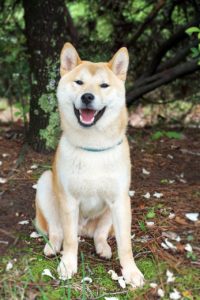
Though it’s been mentioned a couple of times already, Akitas are much larger than Shiba Inus. It is the first and most noticeable difference between the two breeds.
Akitas weigh in anywhere between 70 and 130 pounds and stand at almost two and a half feet at the shoulder.
The smaller Shiba Inu weighs in at only 17 to 23 pounds and stands just over a foot tall at the shoulder.
Although Shiba Inus are full of energy, because of their size they are much better suited to small homes and apartments. Akitas do well in larger homes with a yard so they can stretch out.
Shiba Inu vs Akita Temperament: How do They Behave?
As different as the Shiba Inu and Akita are in size, they are equally distinct in personality. Akitas.
Shiba Inus are spirited, spunky, and love to get into mischief. They are natural comedians but love to be loved.
They are always alert, carefully study everything around them, and are highly independent. Shiba Inus are free-thinking, proud dogs who love a challenge.
They are great with kids as long as they are socialized properly and the children are gentle.
Shiba Inus are wary of strangers and other animals by nature, though. This makes them excellent guard dogs and also makes a leash very important since they are prone to run off in hot pursuit of a squirrel or cat.
Akitas are also amazing guard dogs. Though they are not as fiery and silly as Shiba Inus tend to be, Akitas carry themselves with dignity and are fiercely loyal to those they love.
They value respect and will give respect if they are treated with respect. Spending time with family is incredibly important to Akitas, and if ignored too long, a lonely Akita can turn destructive.
Akitas are loyal guardians, but if treated disrespectfully or roughly they can become aggressive.
Because of this, they are better suited to households with older children who understand how important it is to treat animals gently and respectfully, or to households with no children.
Shiba Inu vs Akita Health: Are They Prone to Health Conditions
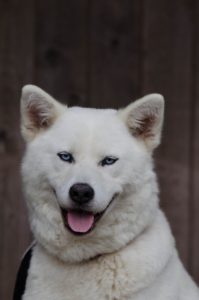
Hip dysplasia is a condition that both breeds can develop. Hyperthyroidism and progressive retinal atrophy (PRA) are also both possible in Shiba Inus and Akitas.
Shiba Inus and Akitas both tend to be healthy dogs, but like all breeds, there are certain health conditions that they are prone to.
Akitas are uniquely susceptible to gastric dilatation-volvulus (bloat) and sebaceous adenitis (SA), while Shiba Inus are more susceptible to chylothorax, glaucoma, cancer, epilepsy, knee dislocations, and tail-chasing.
Despite being susceptible to a slightly wider range of potential issues, Shiba Inus tend to live longer than the larger Akitas. Shiba Inus typically live anywhere from 12 to 16 years, while Akitas live, on average, for ten to twelve years.
Shiba Inu vs Akita Grooming: How Much do They Require?
Both Akitas and Shiba Inus have dense double coats—a stiff, straight outer coat and a soft, plush undercoat—and both shed throughout the year.
Shedding is worse when Akitas or Shiba Inus “blow their coat”—or switch from their winter coat to their summer coat.
During these times, you’re likely to witness a blizzard of shed fur flying through the air. Because of how much they shed, these breeds may be a challenge for anyone with allergies.
Despite how much they shed, Shiba Inus and Akitas are both relatively easy to groom.
Grooming can be done at home, and usually brushing once a week with an occasional bath is more than enough for either breed.
Shiba Inu vs Akita Running Costs: Are They Expensive to Look After?
 Because Shiba Inus and Akitas are so easy to groom, they cost next-to-nothing to keep their soft coats healthy and beautiful. Both breeds come with similar price tags—and many pure-bred dogs can be adopted through shelters and pet adoption databases.
Because Shiba Inus and Akitas are so easy to groom, they cost next-to-nothing to keep their soft coats healthy and beautiful. Both breeds come with similar price tags—and many pure-bred dogs can be adopted through shelters and pet adoption databases.
Although Shiba Inus have more potential health troubles, they tend to live longer than Akitas, so the cost more or less balances out.
The main difference in cost for a Shiba Inu versus an Akita is in the food. Akitas eat easily two to ten times as much as the smaller Shiba Inu depending on how active they are.
This can add up, especially if you invest in high-quality food to keep your dog happy and healthy.
Shiba Inu vs Akita Diet: What do They Eat?
Every dog is unique, so how much food a Shiba Inu or Akita range from dog to dog.
Dogs that are more active will need more food, while dogs that are more sedentary will require less. In general, Akitas eat significantly more than Shiba Inus since they are larger dogs.
Akitas eat about 3 to 5 cups of dry food per day and do best with a high-quality food.
Shiba Inus eat significantly less—usually half a cup to one-and-a-half cups of dry food, divided into two daily meals. Shiba Inus also do best with high-quality food.
Shiba Inus do best with set mealtimes. Having food available all day long may tempt them into over-eating.
Shiba Inu vs Akita Training: Can They be Trained Easily?
Both Akitas and Shiba Inus are willful, independent, and can be stubborn. This makes them tricky to train.
Once you work your way past their stubborn streak, though, both breeds can learn amazing feats due to their incredible intelligence.
Respect is essential for training both Akitas and Shiba Inus. They are proud dogs and will only respect someone who respects them, too.
Ideally, Shiba Inus and Akitas should be trained by their owner, not a trainer. They form unique bonds with each person, and their loyalty and trust must be earned.
Akitas, especially, are bound by these needs. In order to train them, you must earn their trust and respect first.
If you are struggling to train your Shiba Inu or Akita we have created a great article which reviews Brain Training 4 Dogs an amazing programme that can teach your dog amazing tricks!
If you would like to see our review of this click here!
Final Thoughts: Shiba Inu vs Akita
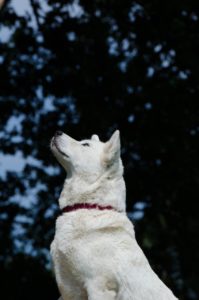 Though similar in appearance, the petite Shiba Inu and the large, loyal Akita are unique and equally incredible dog breeds.
Though similar in appearance, the petite Shiba Inu and the large, loyal Akita are unique and equally incredible dog breeds.
If you have a yard and lots of space in your home, the big, beautiful Akita may be the perfect dog for you.
Or, if you have a small home or an apartment, you might appreciate the pint-sized, big-hearted Shiba Inus.
Whether you are looking for a powerful watchdog full of love, loyalty, and a respectful, poised demeanor like the Akita, or a clever comedian who loves to cuddle like the Shiba Inu, either dog is sure to fill your home with joy.
